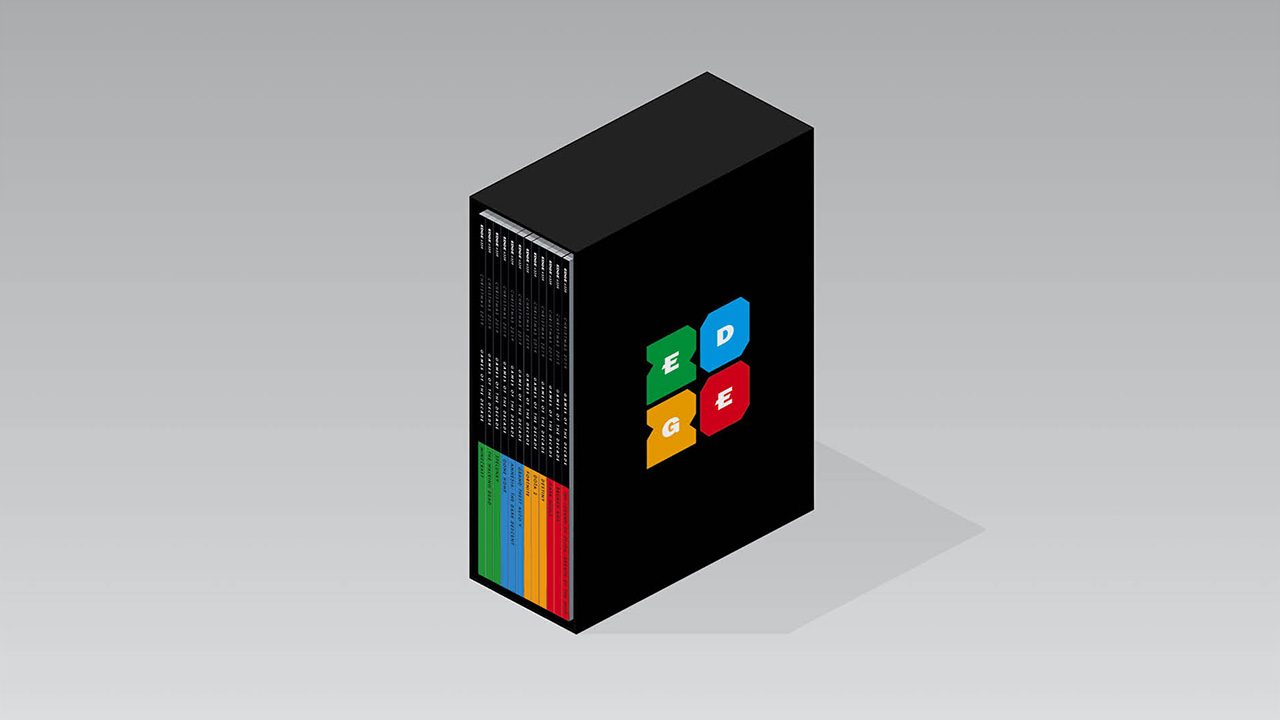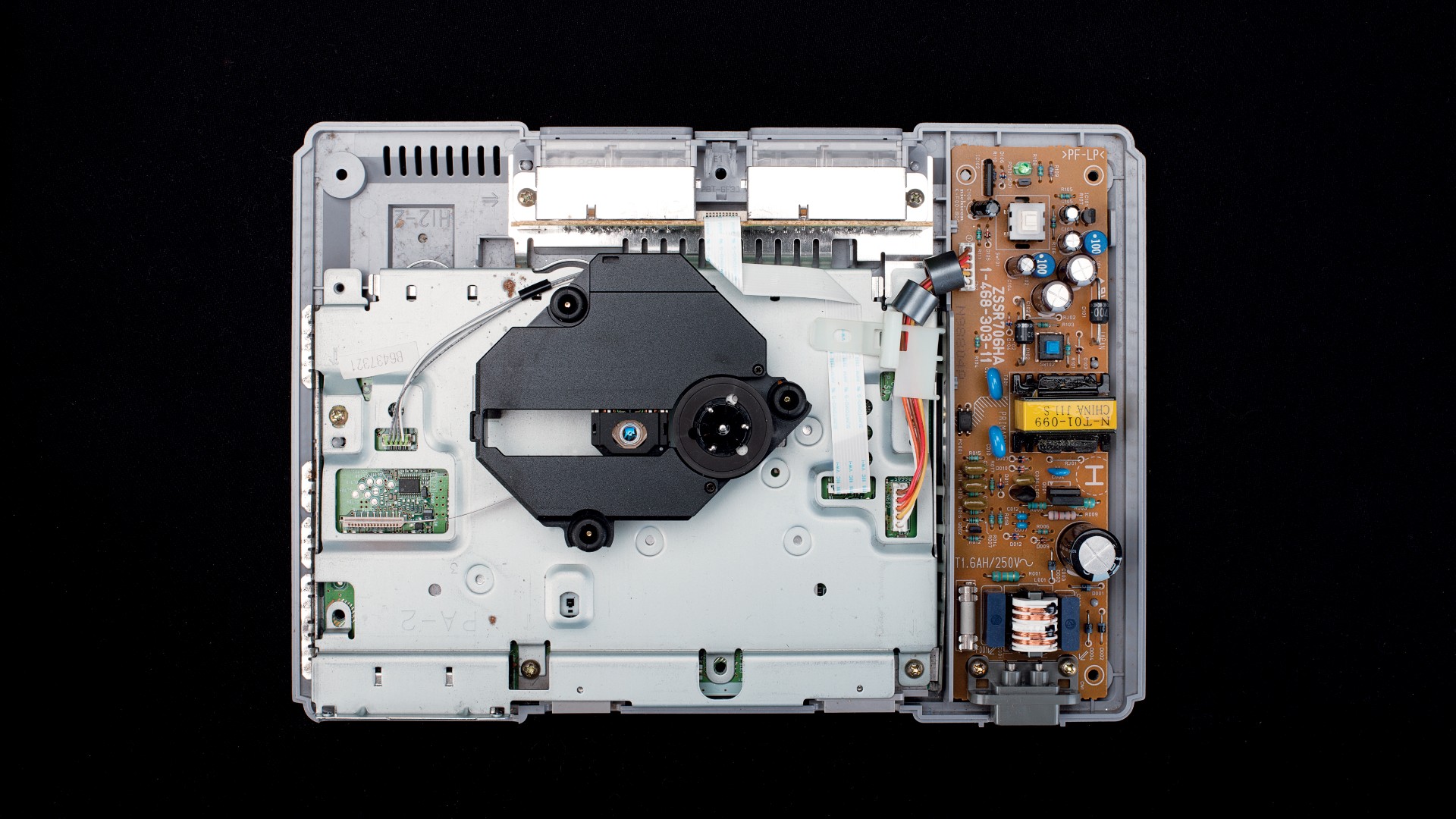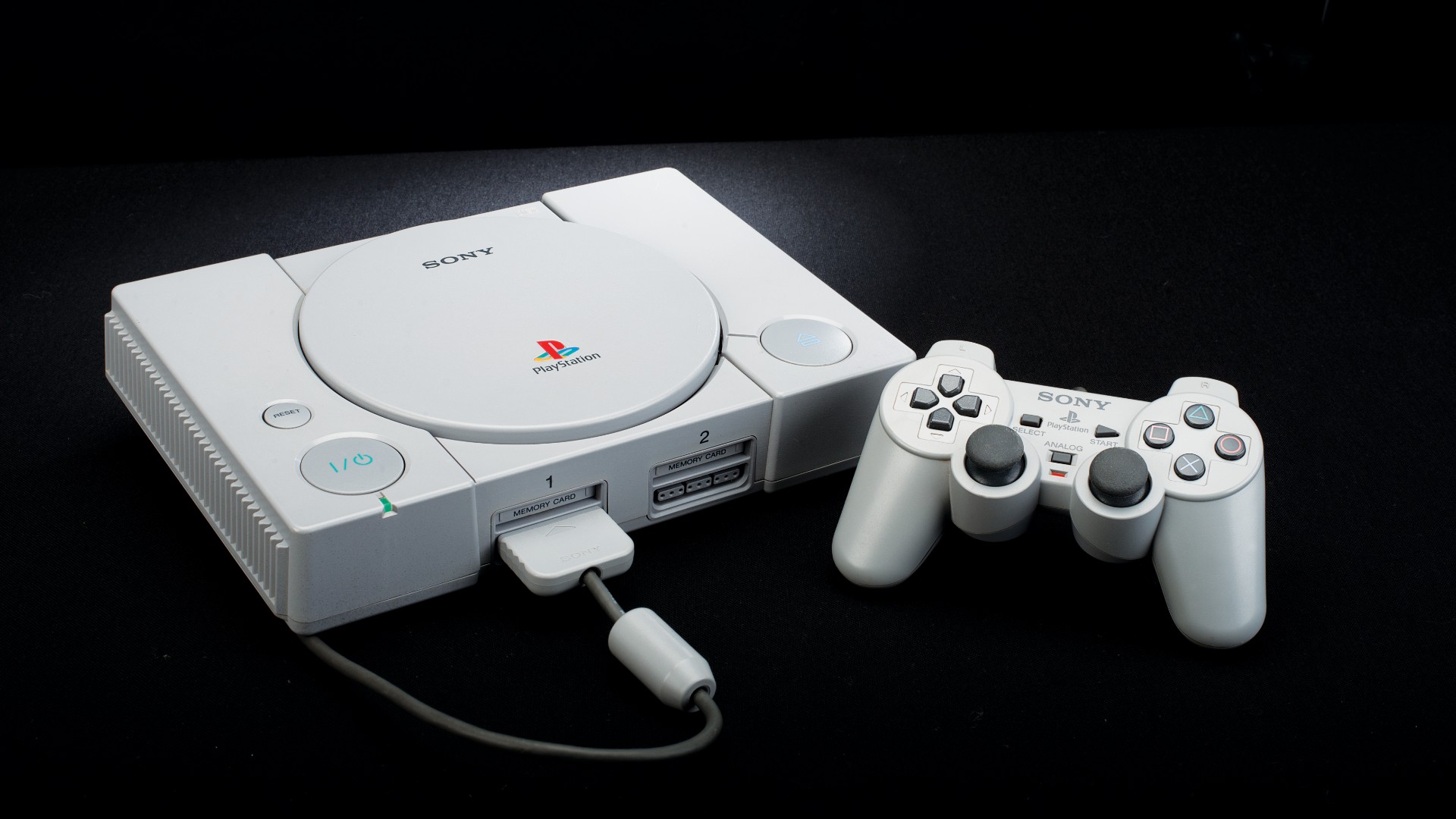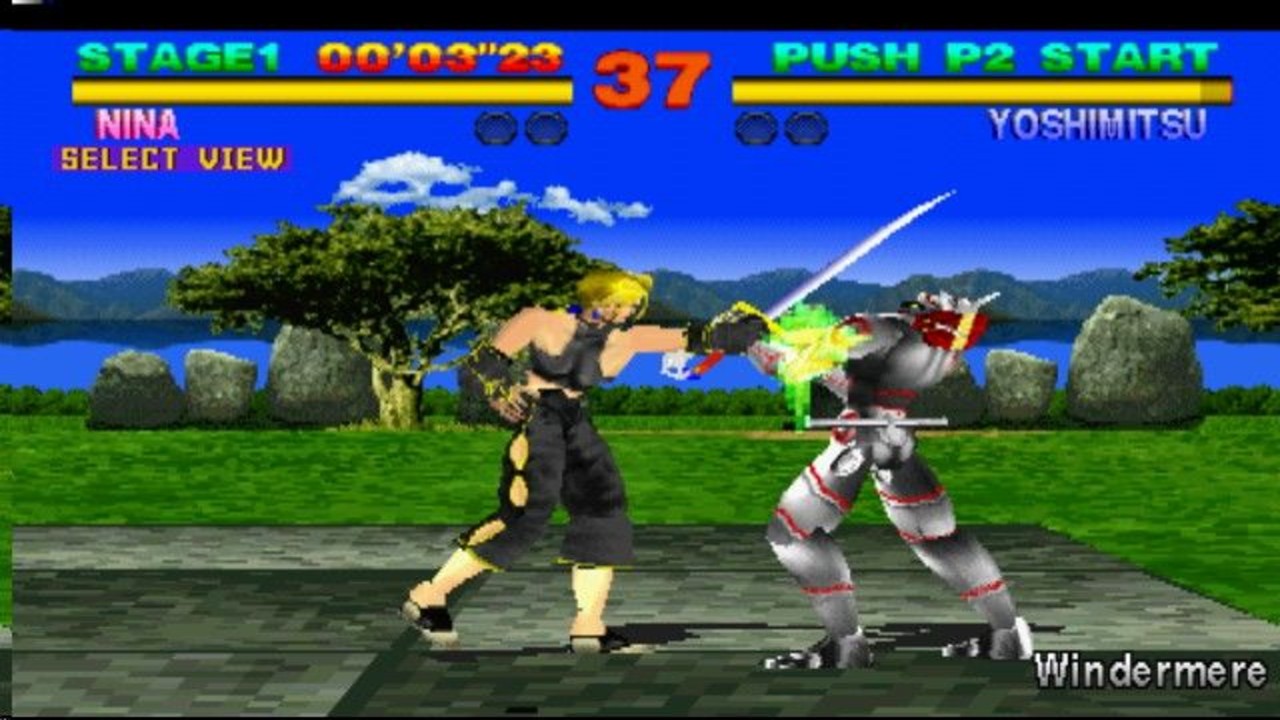PlayStation 25th Anniversary: How Sony created the console that redefined the game industry
How one question sparked an industry revolution: "Are you going to sit back and accept what Nintendo did to us?"

This is a story that isn't just about the design of an object made from silicon, plastic and metal. Nor is it just the story of the corporate politics that allowed the project to commence. It's also the story of sales forces and distribution systems, of marketing strategies and product evangelists, of a confluence of social, economic and technological circumstances that allowed it to thrive. It's about the vision behind the piece of hardware that pushed video games into 3D and a veteran yet wide-eyed technology corporation into an industry that it would transform.
And it's a vision that rose out from the rubble of a very public disaster. At the Consumer Electronics Show in June 1991, Sony revealed to the world a video game console on which it had jointly worked with Nintendo. This SNES with a built-in CD-Rom drive was a project driven by Ken Kutaragi, a Sony executive who had come out of its hardware engineering division. It was to be Nintendo's route into a brave new world of multimedia, and a way for Kutaragi to show his company how important the video game industry could be. But the very day after Sony's announcement, Nintendo declared that it would be breaking its deal with Sony by partnering with Philips instead.
This humiliating turnabout enraged Sony president Norio Ohga, but though it seemed sudden from the outside, problems had been boiling between the two companies for some time. The main issue was an agreement over how revenue would be collected – Sony had proposed to take care of money made from CD sales while Nintendo would collect from cartridge sales, and suggested that royalties would be figured out later. "Nintendo went bananas, frankly, and said that we were stepping on its toll booth and that it was totally unacceptable," explains Chris Deering, who at the time worked at Sony-owned Columbia Pictures but would go on to head the PlayStation business in Europe. "They just couldn't agree and it all fell apart."

This long-read feature is from the pages of Edge. Find more information on the latest edition of the magazine here and the latest subscription offers.
But Ohga was dead set on remaining in the game. At the end of a July meeting to plan litigation against Nintendo, he declared defiantly: "We will never withdraw from this business. Keep going." And so Kutaragi went to work with strong support from the very top of Sony. "Ken brought together a handful of engineers that had come out of a broadcast and professional real-time 3D graphics engine called System-g," explains Phil Harrison, who joined Sony in September 1992 to start its european game publishing business, and would eventually go on to become president of Sony Computer Entertainment Worldwide Studios. System-g was a special-effects computer that broadcasters could use to augment live broadcasts with 3D images in real-time.
"Technologically, that's not really a million miles away from video games, but this was a super high-end workstation. And Ken's big vision was to take that, apply it in high volume and bring it into the home," recalls Harrison. But the relationship with Nintendo wasn't quite over. It had indistinctly proposed that Sony could remain involved in 'non-game areas' of the project, though the move was probably just to delay any attempt Sony may have been making to enter video games off its own bat, as well as sidestep the legal challenges Sony had made over Nintendo's breach of contract. Kutaragi was frustrated. Not only was he facing criticism and resentment from many at Sony who disagreed with the idea of Sony entering the game business, but the project's focus was also dissipating within the company. 'There is no consensus within Sony about why we are engaged in this business', he wrote candidly in his January 1992 business report. 'We are wasting time and missing opportunities while expecting too much from Nintendo and dealing with them in blind good faith'.
Moving on from Nintendo

In May that year, Sony finally put a stop to negotiations, and whether or not it should retain the project was decided at a pivotal meeting chaired by Ohga on June 24. The great majority of those present opposed it, but Kutaragi nevertheless revealed that he'd been developing a proprietary CD-Rom-based system capable of rendering 3D graphics, specifically for playing video games – not multimedia. When Ohga asked what sort of chip it would require, Kutaragi replied that it would need one million gate arrays, a number that made Ohga laugh: Sony's production of the time could only achieve 100,000. But Kutaragi slyly countered with: "Are you going to sit back and accept what Nintendo did to us?" The reminder enraged Ohga all over again. "There's no hope of making further progress with a Nintendo compatible 16-bit machine," he said. "Let's chart our own course."
And achieving that meant Ohga removing Kutaragi from Sony, fearing that the widespread internal opposition to the project might crush Kutaragi's resolve. "There was a huge resistance inside the company to actually being in the video games business at all," explains Harrison. "The main reason why the Sony brand wasn't really used in the early marketing of PlayStation was not necessarily out of choice, but it was because Sony's old guard was scared that it was going to destroy this wonderful, venerable, 50-year old brand. They saw Nintendo and Sega as toys, so why on earth would they join the toy business? That changed a bit after we delivered 90 per cent of the company's profit for a few years."
Weekly digests, tales from the communities you love, and more
Kutaragi was moved with nine team members to Sony music, a separate financial entity owned by the corporation, in the aoyama district of Tokyo. There, he worked with Shigeo Maruyama, CEO of Sony music and soon to become a vice president of the division that ran the PlayStation business, Sony Computer Entertainment International (SCEI), and Akira Sato, who'd also become a VP. Though on face value it hardly sounds significant, the involvement of Sony music was fundamentally important to PlayStation's subsequent success. "Music was huge business back then, and they knew you had to attract talent and that you have to spend money to launch things," says Deering. Sony music knew how to nurture creative talent and how to manufacture, market and distribute music discs – with the move to CD-Rom, the mechanics of making and supplying games had become very similar to that used for music. "Sony made an awful lot of money pressing music discs," explains Deering. "Between the converging interests of the disc pressing divisions and Ken Kutaragi and Ohga-san they were truly well down the road to developing PlayStation."
The final two key players in PlayStation were Olaf Olafsson, who was president and CEO of SCEI's umbrella organisation, Sony Interactive Entertainment (and, incidentally, a writer who'd been nominated for the icelandic Literature Prize), and Terry Tokunaka, who became president of SCEI and had come from Sony's head office. Tokunaka's vision for the project was simple, as Harrison explains: "it was that if we can be the creative choice of the game developers, and the business choice of the publishers, then those two together give us a chance of becoming successful. In order to be very successful you need both elements; you can't have one and not the other. I think this still holds true today for any company that wants to stay in the hardware platform business."

"Nintendo went bananas, frankly, and said that we were stepping on its toll booth and that our proposal was totally unacceptable"
Harrison was among the evangelists who went out to scout for developers and publishers to create games for the platform, having joined PlayStation when it was finally greenlit in the summer of 1993. "We had to work hard to demonstrate our credibility, because bringing hardware to market is one thing, but being an organisation to market and distribute and sell it is another," he says. With Sony's strategy distinctly different to that of Sega and Nintendo, it had a huge opportunity to change the console market, change that prospective publishers and developers were only too keen to happen. "A lot of the business questions related to what the business model was for a publisher, what the royalty rates would be, how we'd make and distribute the software," says Harrison. "That was set against the backdrop of the incumbent business models of Sega and Nintendo, which were at the time very restrictive. They've changed now, but at the time, publishing on 16-bit Nintendo was an expensive and risky proposition."
One of the crucial points in the campaign to win hearts and minds came when Sony offered a solution to the problem that Japanese game publishers had no production capacity or supply infrastructure themselves. After all, under the Nintendo model, Nintendo would make and distribute their software for them. "All the publishers we worked with in Japan said that they loved the machine and were all super excited, but wondered how they'd bring their software to market," explains Harrison. "This was where the partnership between Sony Corp and Sony music really came to fruition." Sony invited all the game publishers and developers to a hotel in Tokyo in 1994 and paraded on a stage the 40 direct sales people it had in place to distribute software. "It said: 'We know this is a challenge for you, so we've gone ahead and built our own sales force'," Harrison continues. "The net effect was that there were hundreds and hundreds of third-party publishers in Japan. Tonnes and tonnes of product being developed for PlayStation – with the resulting dynamic range of quality…"
Harrison found that developers began to allocate resources to PlayStation long before they had publishing agreements that laid out their royalty rates. "That was an incredible demonstration of support and confidence, given that we hadn't even announced the formation of the company, just Sony Computer entertainment in November 1993. And then throughout early '94 we hadn't announced the business model. We hadn't a company, no leadership or executive team outside Japan – all that changed fairly quickly, but the key events were bringing in big companies like electronic arts in the west and namco in Japan."
It helped that the demos for the new hardware were inspiring. Harrison recalls having a video Fedexed to him that had been used to show Japanese publishers the capability of the machine. "I remember watching it over and over again and thinking that I couldn't believe it, that it was absolutely extraordinary. Just being excited, and also incredulous." In December 1993, it was his turn to show around 100 european developers and publishers what Kutaragi had been creating. Frontier's David Braben and Argonaut's Jez San were there: "Jez said he didn't believe it was running on the hardware and that it was on a Silicon graphics workstation, and we had to take him to the side of the room to show him what it was running on."
A breath of fresh air

Apart from the powerful allure of the hardware itself, two factors helped Sony's cause enormously. The first was that western developers and publishers were starting to move toward producing games heavy with full-motion video for CD-Rom on PCs, and experimenting with 3D. The second was that Japanese publishers were finding creating games for Sega and Nintendo expensive, risky – and slow. They were used to ten-to-12-week lead times for cartridges, meaning that they had to manufacture game cartridges according to forecasts and had difficulty reacting to actual demand. Sony offered an order system that was just seven to ten days. "it was a massive shift in the economics," explains Harrison. "The working capital requirement shifted massively in favour of the developer and publisher, and they could afford to put more money into product development and marketing, so it was a virtuous circle." The idea of a 3D-capable, CD-Rom-based console and a different way of doing business was a breath of fresh air for all.
Another major attraction for third parties was that Sony didn't have internal development studios until early 1994. Though a weakness for Sony because it meant an almost complete reliance on external partners for PlayStation's early software, third parties saw it as an advantage because it meant less competition. But Sony wasn't entirely without capacity, having acquired Psygnosis in May 1993. It was a loose relationship – Psygnosis retained its publishing business, which released games for other platforms, but it played a vital role in creating PlayStation development tools that ran on PCs rather than the early kits, which were large, repurposed Sony NEWS workstations. "Psygnosis came to a large meeting at the alexis Park hotel in Las Vegas during CES 1994 – 11 months before the launch of the machine in Japan – with an early prototype of a working development environment that was far in advance of anything that had come out of Japan," says Harrison. Psygnosis, of course, would go on to make Wipeout and publish Destruction Derby for the european launch lineup in September 1995.
It was Namco's Ridge Racer that stood out by far among the Japanese launch games. Visiting Namco's Yokohama tech centre, Harrison saw the finished game a few weeks before the December 3 release. "I'd seen an earlier work-in-progress build a couple of months before, but they'd done the port from the coin-op remarkably quickly. I remember realising that was going to be pivotal piece of software for the west in particular." But then he saw one of the pieces of software that would help define the console's later success. "It was almost an afterthought. One of the men demonstrating it asked, since I was there, would i like them to show me another game they're working on? 'Yeah, sure', I said. 'What's it called?' 'It's called Tekken'."

"The old guard was scared it was going to destroy the brand. That changed a bit after it delivered 90 per cent of Sony’s profits"
The rest of the launch games were rather less memorable. "With the notable exception of Ridge Racer, there is no way you'd extrapolate the global success that happened from that first lineup," concedes Harrison. And that's including Kazanori Yamauchi's Motor Toon Grand Prix, a title he made before forming Polyphony to create Gran Turismo. But the 100,000 units Sony made for Japanese launch day sold out all the same. "It was an incredible undertaking from all manner of perspectives," says Harrison. "Manufacturing, financial, buying the components, getting the distribution infrastructure in place to ship them – we started manufacturing probably around October to hit the launch date."
Another 200,000 sold in the console's first 30 days on sale. This was at a price of ¥39,800 – which at the time translated to $390, or £245 – compared to Sega's Saturn launch price of ¥44,800 the month before. Though instrumental to PlayStation's success, price was a contentious issue at Sony, because, against all corporate tradition, PlayStation would be sold at a loss. While Kutaragi had initially forecast that memory prices would go down, the truth was that, ten months before launch, they were going up – and they'd stay high all the way up until late 1995. The trend was principally due to booming PC sales, but, ever resolute, Kutaragi stuck to his guns, declaring that they would certainly come down over time, and that every competitor was in the same position. And besides, the PlayStation business was to be quite different from Sony's conventional appliance business, which depended on direct profits from hardware sales, because in games, profits could instead be gained from software sales. The policy was still hard to reconcile with Sony's old guard until Kutaragi dropped certain hardware features, such as the original model's S-Video port.
This pricing policy allowed SCEI to severely dent the fortunes of Sega's Saturn in the US. Famously, Saturn was surprise-launched in the US at $399 during E3 on May 11, 1995, but the timing allowed Sony to immediately get the upper hand. Harrison was at Sony's E3 press conference shortly afterwards: "Olaf Olafsson was doing the spiel about growth in the industry and droning on – it was deliberately staged that way. I can't remember a single thing about his presentation, but he did say that he'd like to bring on stage the president of Sony Computer Entertainment America to share with you an important piece of information. Steve Race went up to the microphone, just said '299', and sat back down again. The room erupted." But staff at Sony's corporate headquarters weren't amused. "It was properly agreed, but word had not made its way back to Japan and there were parts of Sony scratching their heads in shock," says Deering. "I think Tokunaka got in trouble. It was a scary thing for them."
Fighting for the PlayStation brand

But we're getting ahead of ourselves. Shortly after the Japanese launch, plans started for the European and US launches. Deering was initially asked to head up US operations, but turned down the role in favour of the opportunity to direct the more challenging but more interesting cultural patchwork of Europe. "They thought i was pretty crazy, actually," he remembers. "The european market is only 60 per cent the size of the US, they said, but I said, 'Right now it is, but that's only because it's handled in a dilettante fashion'. Europe was almost exploited by Japanese console makers in demanding high minimum orders from distributors." After all, the usual focus for a Japanese console maker was always the US after the home territory. "Sony Japan really didn't understand Europe at the time, or pay much attention to it. Which is why we got to manage in an unencumbered style."
Steve Race, a long-time executive for such companies as Sega, Nintendo and Atari, hired many ex-Sega employees for SCEA. "They went by the handbook of the old Sega business," says Deering. "They limited the number of third-party releases, drove hard bargains – there were a lot of rough edges in treatment of third-parties and had even been rough in approving products by konami and namco." Race also played rough, as Harrison recollects: "at the alexis Park hotel in January 1995, where Sega held their CES party, Steve Race organised for every napkin to be printed with 'PSX welcomes Sega to CES'! That was a fun moment, because these napkins were everywhere. [Sega of America head] Tom Kalinske went totally nuts and demanded that all the napkins were purged from the hotel, quite reasonably so, but legend has it that later on in the party he was handed a beer with one of these napkins around it, and he exploded."
A larger sticking point, however, was PlayStation branding. SCEA hated the name and wanted to change it to PSX, a contraction of the project's codename. "This was actually a huge internal battle, to the point where there was research done among consumer groups," says Harrison, who, having seen various youth groups reacting badly to the name PlayStation, had his own fears about it. "I remember thinking, 'oh my god, the name is bombing and everyone is going to hate it'. I shared the information with Tokunaka-san, and he said, 'oh, that's nothing, you should have heard what people said about Walkman'. and that pretty much ended the debate." In Europe, at least: the US nevertheless went ahead with early trade promotion, calling it PSX, and had even come up with its own mascot, Polygon Man.
SCEA's marketing company was Chiat/Day, the LA-based agency that had produced the famous apple '1984' Super Bowl advert and had come up with the energizer Bunny. Its consumer research had said that the golden age was 17, in that a 12-year-old wants to be 17, and a 25-year-old wants to be 17 again. So SCEA wanted to aim its message at that age group. "Polygon Man was going to be this iconic brand that would talk in various media to consumers as this kind of next-gen type spokesman," says Harrison. With shades of Sega's anarchic Pirate TV campaign in the UK in the early '90s, it was far from SCEI's minimalist vision for the brand. "It upset the Japanese because they thought it was fighting the PlayStation brand," says Deering. "But we knew it was to dodge it."

"With the notable exception of Ridge Racer, there’s no way you’d extrapolate the global success that happened from that first lineup"
"I remember walking onto the E3 booth in 1995 with Ken and seeing the Polygon Man design on the side of the booth. Ken just went absolutely insane," says Harrison. Kutaragi's problem was that SCEA was investing a limited budget in an alternative brand. "But the thing that really upset Ken was that the Polygon Man design wasn't gouraud shaded, it was flat shaded! So Polygon Man was taken out into the car park and quietly shot." Other parts of the US launch campaign were rather more successful, such as 'U R Not e' (being coloured red, the 'e' stood for 'ready'), and 'Enos' (another red 'E' denoting 'Ready Ninth Of September').
Race would leave SCEA just six weeks before the big launch – rumours flew as to whether such marketing disagreements had anything to do with his decision. Nevertheless, the US PlayStation launch was a massive success. All 100,000 units sold out in September, and by Christmas PlayStation had sold 800,000 in the region compared to Saturn's 400,000 since May.
PlayStation launched in Europe on September 29 at £299, across many more countries than Sony had intended. "They were quite upset with me – they really only wanted us to launch in the UK, France and Germany, because of possible advertising expense," says Deering. "I said that it'd go elsewhere anyway, and there would be other issues, and leave it to me. So we went everywhere except Scandinavia, which we didn't get to until November or so." By the end of the year, his team had shipped 600,000 units, using Deering's experience with and contacts in Sony's film and music publishing businesses. SCEE eventually covered Russia, India and the Middle East. By the end of March 2007, Sony had sold 102 million PlayStations.
Sales between SCEA and SCEE were almost equal, demonstrating the importance of Europe to the global game market. And it was a game market transformed by a new way of doing business and given new legitimacy by the presence of such an internationally respected company as Sony. PlayStation was the product of a confluence of the right technology at the right time at the right price, but it took Sony to create it. Indeed, it's hard to imagine any other company than Sony, armed with the combined experience and capabilities of its hardware, software and entertainment divisions, producing a story like PlayStation.
This feature first ran in EDGE magazine, issue #200. For more like the long-read that you've just finished reading, why don't you consider picking up a digital or print subscription to the award-winning magazine.
Edge magazine was launched in 1993 with a mission to dig deep into the inner workings of the international videogame industry, quickly building a reputation for next-level analysis, features, interviews and reviews that holds fast nearly 30 years on.



